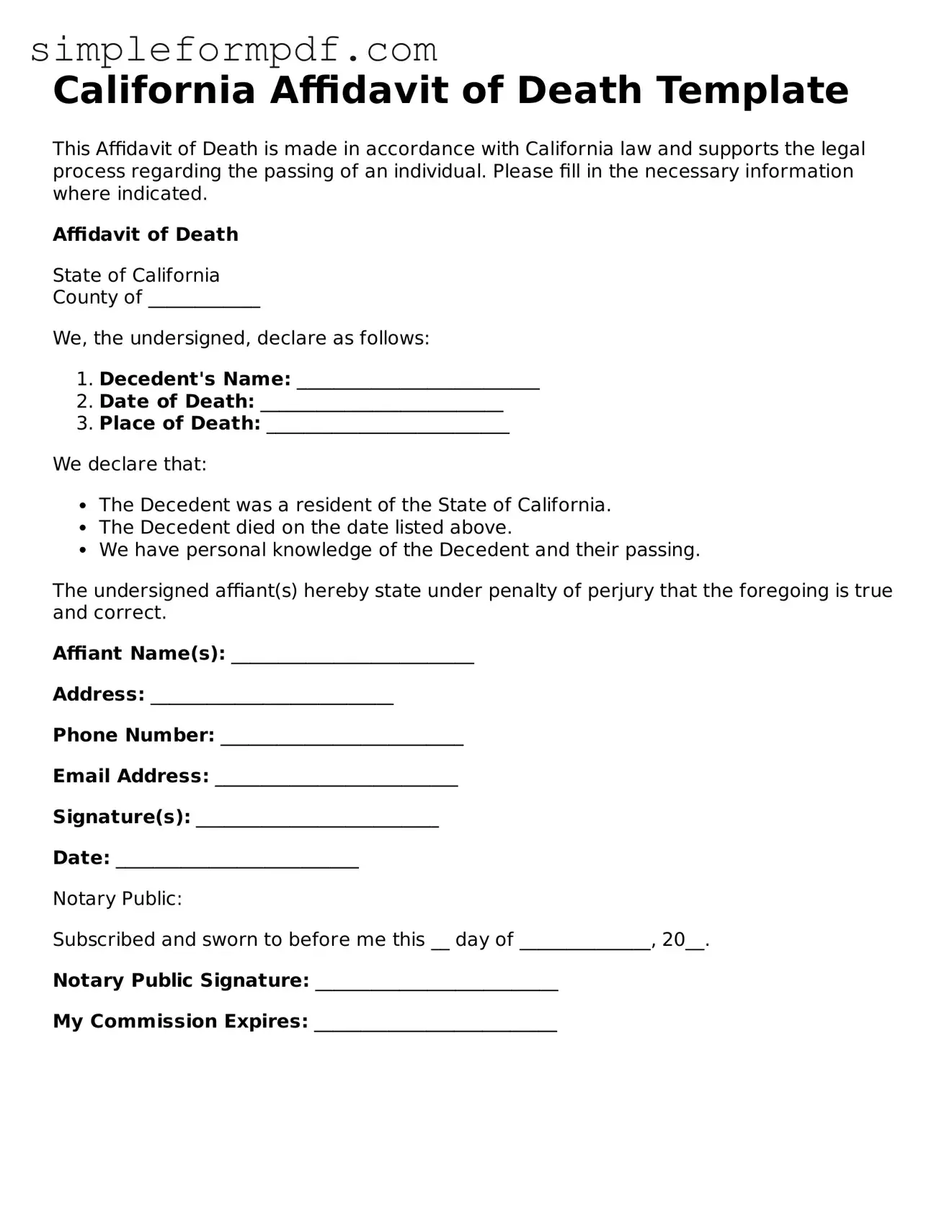California Affidavit of Death Template
This Affidavit of Death is made in accordance with California law and supports the legal process regarding the passing of an individual. Please fill in the necessary information where indicated.
Affidavit of Death
State of California
County of ____________
We, the undersigned, declare as follows:
- Decedent's Name: __________________________
- Date of Death: __________________________
- Place of Death: __________________________
We declare that:
- The Decedent was a resident of the State of California.
- The Decedent died on the date listed above.
- We have personal knowledge of the Decedent and their passing.
The undersigned affiant(s) hereby state under penalty of perjury that the foregoing is true and correct.
Affiant Name(s): __________________________
Address: __________________________
Phone Number: __________________________
Email Address: __________________________
Signature(s): __________________________
Date: __________________________
Notary Public:
Subscribed and sworn to before me this __ day of ______________, 20__.
Notary Public Signature: __________________________
My Commission Expires: __________________________
